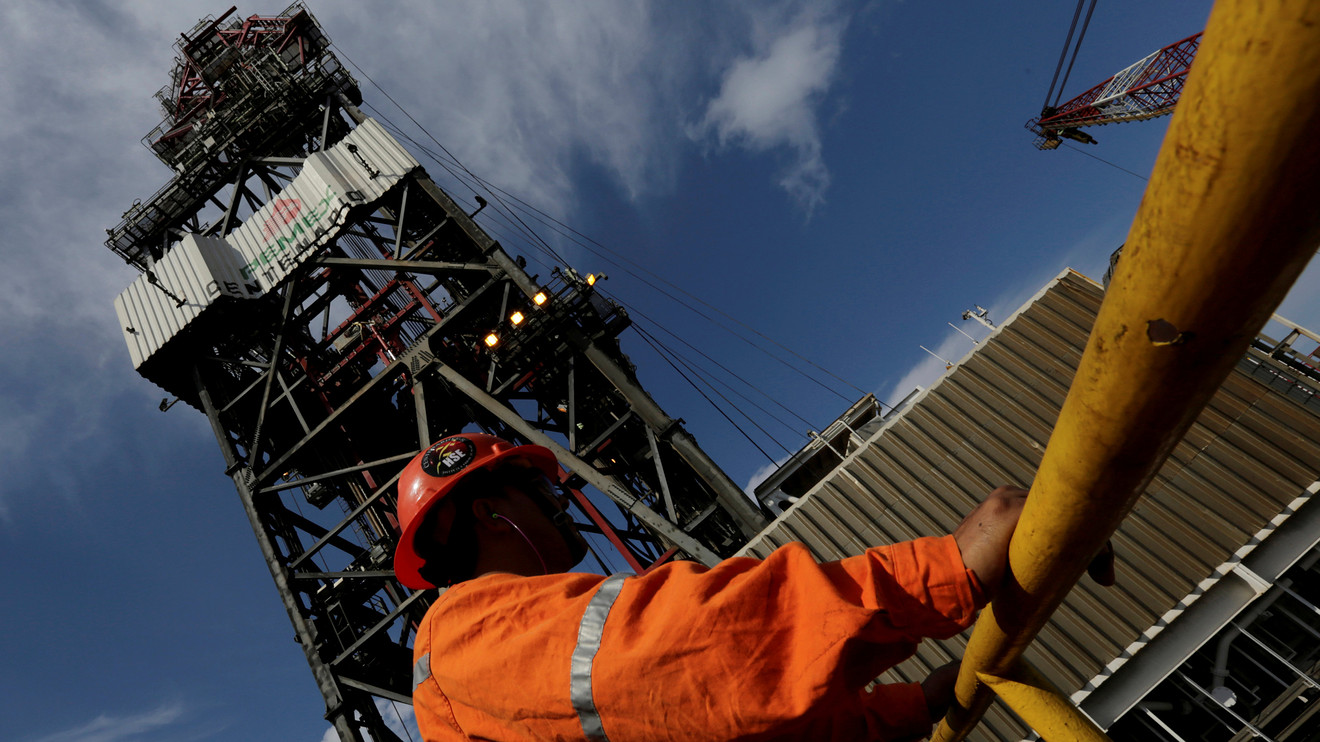
Oil futures climbed Thursday, headed for their third session gain in a row, as investors focused on still percolating Middle East tensions.
The U.S. and Saudi Arabia have “backed Iran into a corner,” said Matt Badiali, senior research analyst at Banyan Hill Research.
“There is petty sabotage going on right now with tankers near the Strait of Hormuz and the drone attack on the Saudi pipeline,” he said in email commentary. “If that accelerates, we will see oil prices increase sharply.”
West Texas Intermediate crude for June delivery CLM9, +1.95% was up $1.34, or 2.2%, at $63.36 a barrel, with prices again set to mark the highest finish for a front-month contract since May 8, according to FactSet data. Prices were on track for a third straight climb and trade more than 2% higher for the week.
The global benchmark, July Brent LCON9, +1.87% added $1.42, or 2%, to $73.19 a barrel on ICE Futures Europe, poised for the highest finish since late April.
The U.S. on Wednesday ordered all nonemergency staff to leave Iraq immediately amid heightened tensions with Iran over recent attacks against oil tankers and facilities in the Persian Gulf region. The threatening activity, which followed the U.S. removal of waivers for select buyers of Iranian oil, is seen potentially disrupting getting oil out of the region to feed the global market.
See: U.S. claims of growing Iranian threat met with global skepticism
Earlier this week, armed drone attacks halted pumping on key Saudi oil pipeline. Iranian-backed Houthi rebels in Yemen said they were responsible for the attack.
Read: Are stock-market investors complacent about Iran?
Also, this past weekend, a “sabotage” attack off the eastern coast of U.A.E., near the Strait of Hormuz, a major oil chokepoint, damaged two of Saudi Arabia’s oil tankers.
‘I’m bullish on oil. The oil market could explode.’
Against that backdrop, Badiali said he’s “bullish on oil. The oil market could explode.”
Oil prices were higher even as the Energy Information Administration on Wednesday reported that U.S. crude supplies rose by 5.4 million barrels for the week ended May 10. Analysts and traders expected a fall of 1.4 million barrels, on average, according to a Wall Street Journal survey.
“U.S. production has increased dramatically to the point that the one-time net importer is now an exporter of energy products. Shale technology has tipped the scales of global production and threatens to reduce the influence that the OPEC has on the market,” said Alfonso Esparza, senior market analyst at Oanda.
The decision from members of the Organization of the Petroleum Exporting Countries to “fight fire with fire and flood the market to drive shale operations into bankruptcy backfired and forced the group to reach out to non-OPEC members in order to have a significant impact on the market by collectively reducing their output,” Esparza said, adding that the deal between OPEC and other major producers that ends in June could be extended if participants deem the market has not reach price stability. Russia, which took a more significant revenue hit with the production controls, is the bigger wild card, the analyst said.
The OPEC/non-OPEC Joint Ministerial Monitoring Committee will gather in Jeddah on Sunday. The committee monitors compliance with the OPEC-led production-cut agreement. OPEC and allied producers will hold their next meeting in Vienna on June 25-26, just ahead of the expiration of the current output-cut pact.
In a separate monthly report Wednesday, the IEA trimmed its forecast for oil-demand growth for 2019 by 90,000 barrels a day to 1.3 million barrels, but said it expected the slower growth to be short-lived. A trade dispute between the U.S. and China has also contributed to concerns that the lack of a resolution will lead to a slowdown in global energy demand.
Back on Nymex, June gasoline RBM9, +2.59% rose 4.9 cents, or 2.4%, to $2.062 a gallon, while June heating oil HOM9, +2.06% added 4.7 cents, or 2.2%, to $2.133 a gallon.
June natural gas NGM19, +1.27% was up 3 cents, or 1.2%, at $2.631 per million British thermal units.
The EIA on Thursday said domestic supplies of natural gas rose by 106 billion cubic feet for the week ended May 10. A survey of analysts by S&P Global Platts had shown expectations for a an increase of 101 billion cubic feet, while the five-year average stands at a climb of 88 billion.
Providing critical information for the U.S. trading day. Subscribe to MarketWatch’s free Need to Know newsletter. Sign up here.






